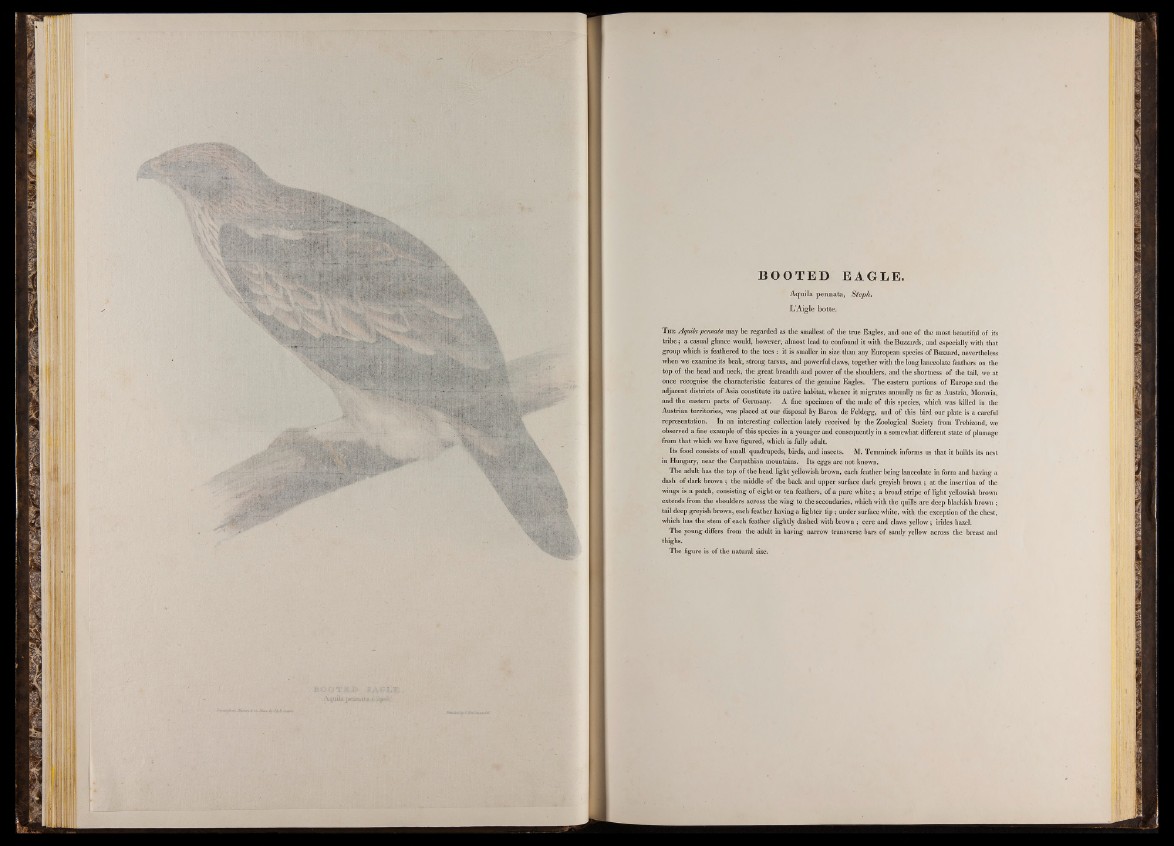
m m
W a t tM
i l l . . .
Hi
BOOT ED EAGLE.
Aquila pennata, Steph.
L’Aigle botte.
T he Aquila pennata may be regarded as the smallest of the true Eagles, and one of the most beautiful of its
tribe; a casual glance would, however, almost lead to confound it with the Buzzards, and especially with that
group which is feathered to the toes : it is smaller in size than any European species of Buzzard, nevertheless
when we examine its beak, strong tarsus, and powerful claws, together with the long lanceolate feathers on the
top of the head and neck, the great breadth and power of the shoulders, and the shortness of the tail, we at
once recognise the characteristic features of the genuine Eagles. The eastern portions of Europe and the
adjacent districts of Asia constitute its native habitat, whence it migrates annually as far as Austria, Moravia,
and the eastern parts of Germany. A fine specimen of the male of this species, which was killed in the
Austrian territories, was placed at our disposal by Baron de Feldegg, and of this bird our plate is a careful
representation. In an interesting collection lately received by the Zoological Society from Trebizond, we
observed a fine example of this species in a younger and consequently in a somewhat different state of plumage
from that which we have figured, which is fully adult.
Its food consists of small quadrupeds, birds, and insects. M. Temminck informs us that it builds its nest
in Hungary, near the Carpathian mountains. Its eggs are not known.
The adult has the top of the head light yellowish brown, each feather being lanceolate in form and having a
dash of dark brown ; the middle of the back and upper surface dark greyish brown ; at the insertion of the
wings is a patch, consisting of eight or ten feathers, of a pure white; a broad stripe of light yellowish brown
extends from the shoulders across the wing to the secondaries, which with the quills are deep blackish brown;
tail deep greyish brown, each feather having a lighter tip; under surface white, with the exception of the chest,
which has the stem of each feather slightly dashed with brown ; cere and claws yellow; irides hazel.
The young differs from the adult in having narrow transverse bars of sandy yellow across the breast and
thighs.
The figure is of the natural size.